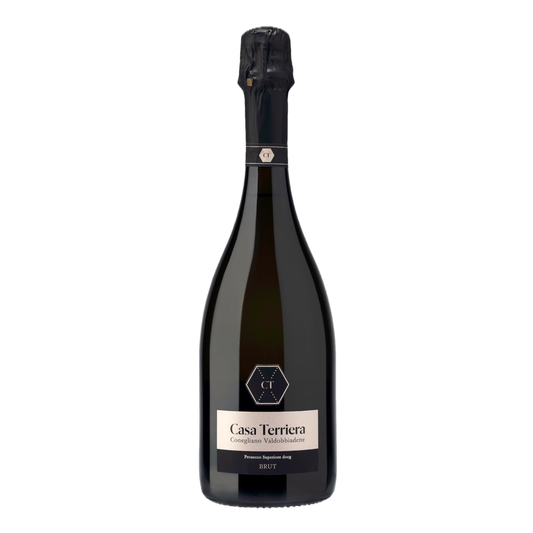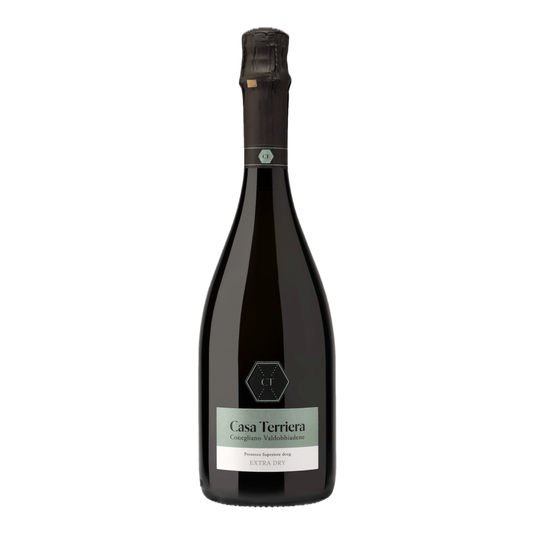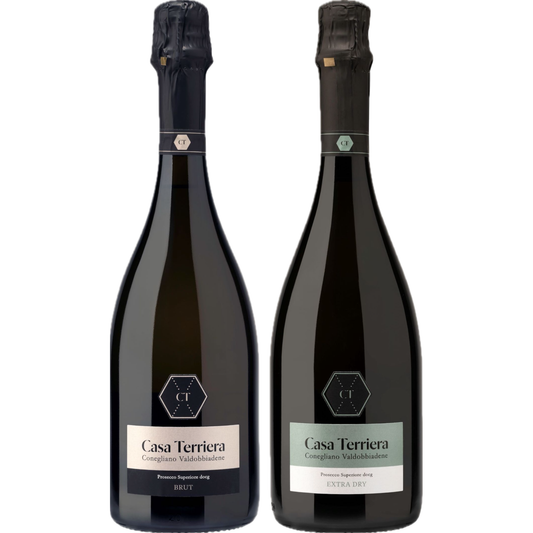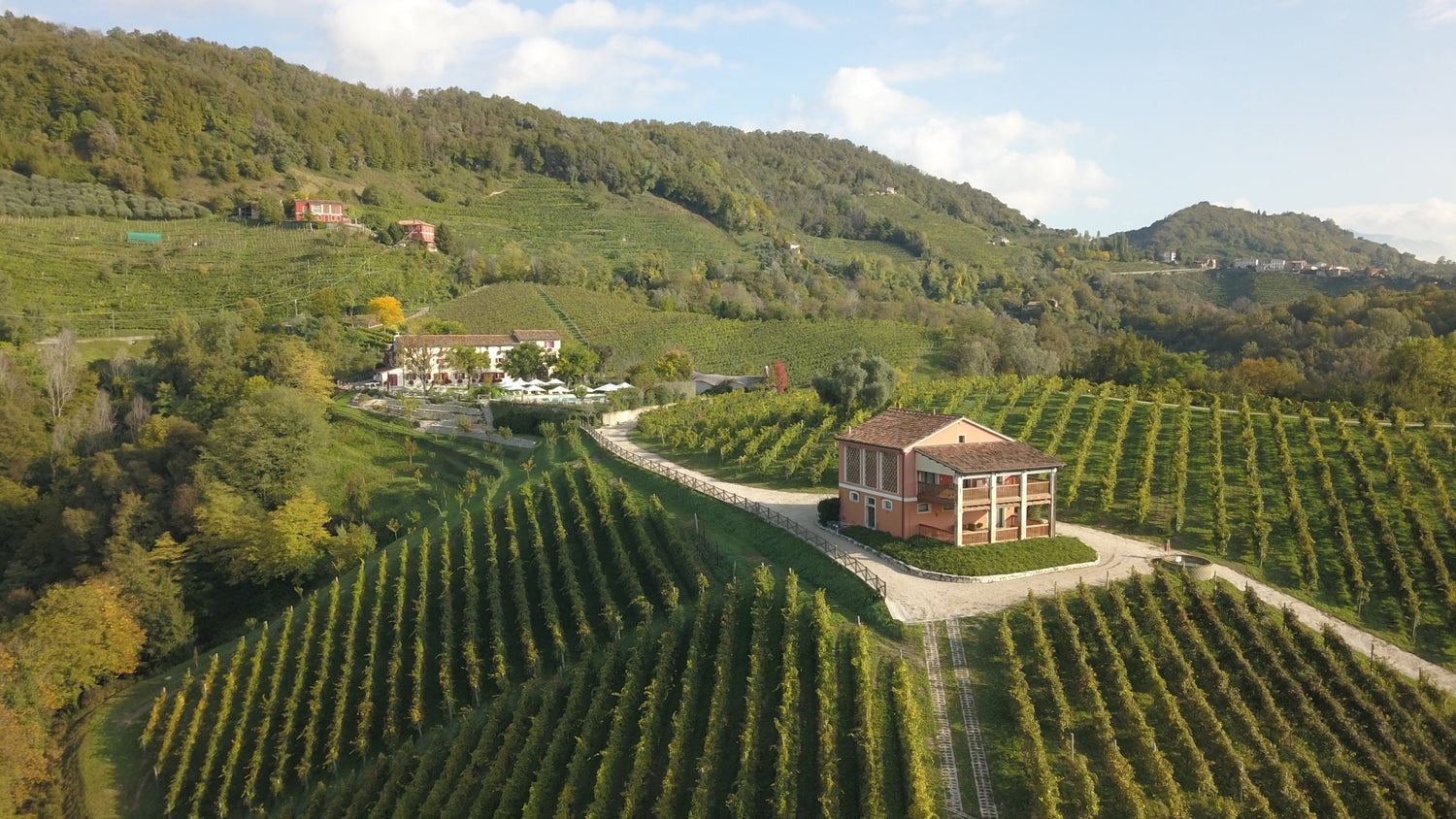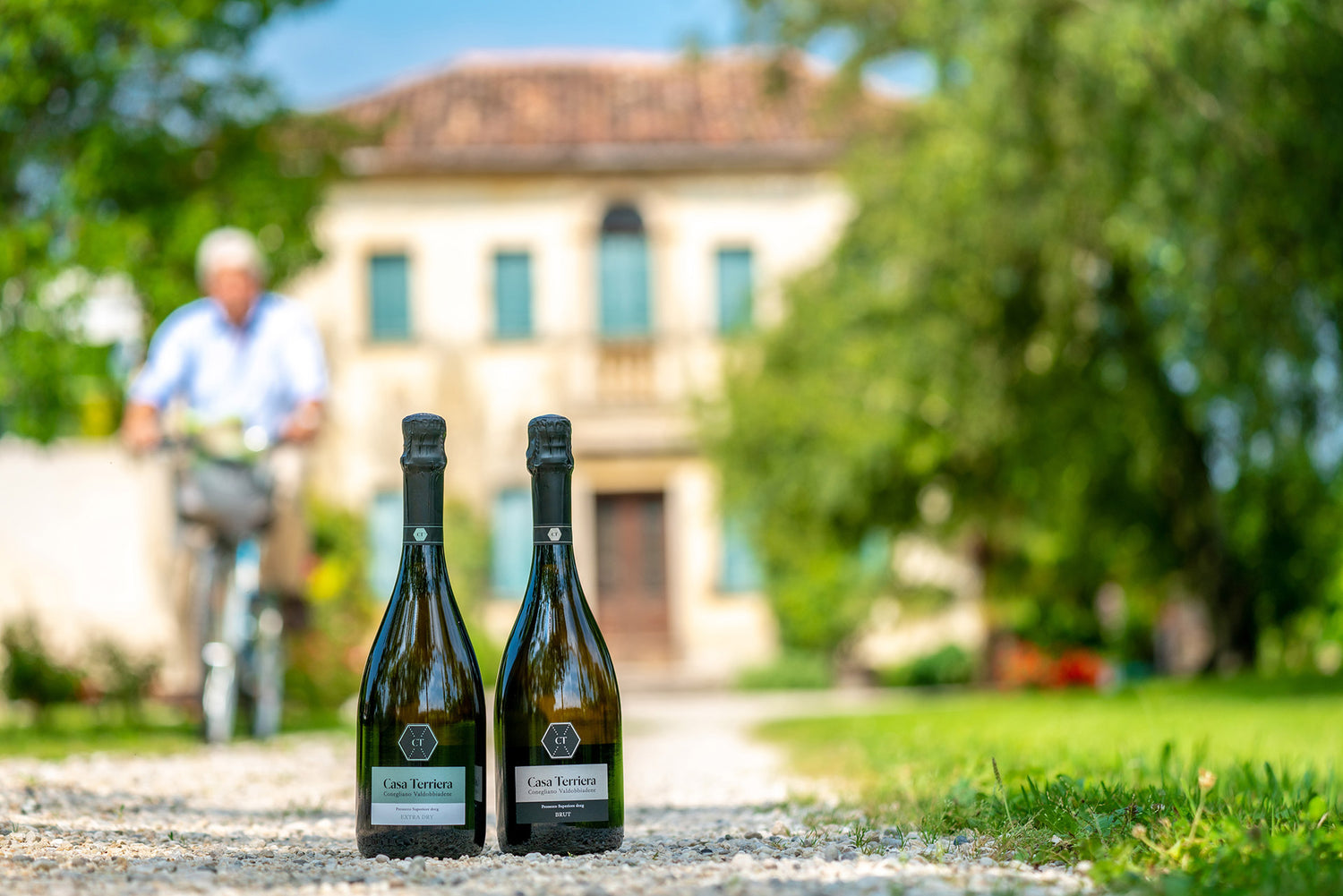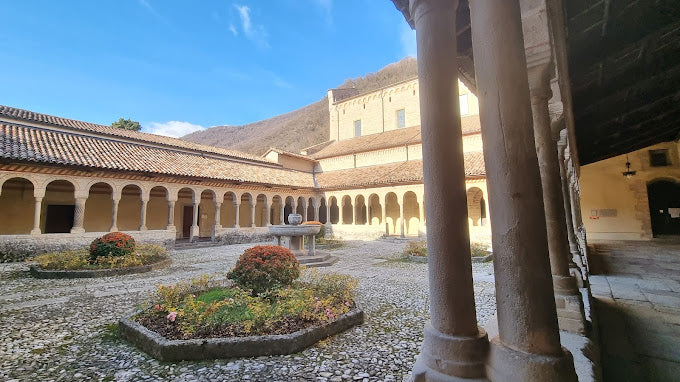Prosecco online shop at the highest level of enjoyment
Prosecco has many facets: it is not just a wine or sparkling wine, but also a symbol of the beauty of the Prosecco region of Conegliano-Valdobbiadene, the art of craftsmanship, the warmth of hospitality and attention to detail. In the Prosecco online shop of Proseccheria you can experience the variety and quality of this special drink.
Our selection in the Prosecco online shop is the result of careful research and collaboration with outstanding local winemakers who combine tradition with innovation while preserving the authenticity of this wine. In our Prosecco online shop, you can immerse yourself in the flavours and aromas of Prosecco Valdobbiadene, which reflect the natural variability of the seasons and always convey new emotions.
At the Proseccheria, you can experience all the variety and beauty of each Prosecco on offer. Discover the true essence of these fine wines in our Prosecco online shop and be inspired by the uniqueness of every single bottle.
-
Conegliano Valdobbiadene Prosecco Superiore DOCG Casa Terriera Brut
Regular price CHF 26.00Regular priceUnit price per -
Conegliano Valdobbiadene Prosecco Superiore DOCG Casa Terriera Extra Dry
Regular price CHF 26.00Regular priceUnit price per -
Degu set Prosecco Superiore DOCG Casa Terriera (2 bottles)
Regular price CHF 52.00Regular priceUnit price per
Sort by winemaker:
Prosecco online shop knowledge
Immerse yourself in the world of Prosecco in the Proseccheria Prosecco online shop and discover everything you need to know - from the finest nuances of production to the wide range of available varieties and valuable tips on how best to serve this popular Italian sparkling wine.
Frequently asked questions about Prosecco
The Prosecco region in Italy
Conegliano Valdobbiadene, an enchanting region in Veneto, Italy, is the undisputed home of Prosecco. The landscape of Conegliano Valdobbiadene is characterised by impressive hills, historic vineyards and a long tradition of wine production. Viticulture has a long history here, dating back to 1772.
Prosecco from Valdobbiadene embodies not just a drink, but an art form, culture and a deep connection with nature. The vineyards that stretch across the steep hills have been lovingly tended by local winegrowers for many generations. These winegrowers rely on a combination of traditional cultivation methods and modern techniques to achieve the highest quality standards.
The unique microclimate and calcareous soils of Valdobbiadene give Prosecco its unmistakable freshness and elegance. The region benefits from a temperate climate with sufficient sunshine and cool nights, which gives the grapes optimal ripening conditions and a balanced acidity ratio. These special natural conditions play a decisive role in the quality and unmistakable flavour of Prosecco.
Valdobbiadene is the centre of the Prosecco Superiore DOCG (Denominazione di Origine Controllata e Garantita), the highest quality level for Italian Prosecco. Only Prosecco grown in this special region and produced according to strict guidelines may bear the coveted DOCG seal. This seal is a seal of approval that guarantees consumers the highest quality.
Prosecco Valdobbiadene impresses with a wide range of flavours, from fruity notes such as apple, pear and citrus fruit to floral and nutty nuances. The fine perlage, i.e. the delicate bubbles, is another quality feature that makes Prosecco a sparkling delight. Every sip tells the story of the region, its inhabitants and the passion that goes into every bottle.
Glera, the grape behind Prosecco
The grape from which Prosecco is made used to be known as both Prosecco and Glera. This grape variety, which is thin-skinned and green, has been cultivated for centuries in the Veneto and Friuli regions of northern Italy.
In 2009, the Italian authorities decided to legally protect the name "Prosecco" and officially rename the grape variety ‘"Glera" in view of the increasing plantings in the New World. This step was similar to the French approach of protecting the name Champagne as a place of origin. In the same year, the Conegliano Valdobbiadene appellation was granted the status of Denominazione di Origine Controllata e Garantita (DOCG), the highest Italian wine classification.
In Italy, wines may only be labelled as Prosecco if they are produced in three specific appellations and consist of at least 85% Glera. Nevertheless, producers abroad also use the term for their wines, which often leads to legal disputes.
Glera is a high-yielding grape variety, and higher yields tend to produce more neutral wines. The grape's moderately high acidity makes it ideal for the production of sparkling wines. Glera wines are characterised by aromas of melons, peaches, pears and white flowers and are generally light to medium-bodied. The alcohol content varies depending on the winemaker's preferences and the amount of residual sugar.
Collapsible row
Quality designations for Italian Prosecco
The abbreviations DOC and DOCG, which stand for Denominazione d'Origine Controllata (DOC) and Denominazione d'Origine Controllata e Garantita (DOCG), can be found on Italian wine labels. These designations are defined by law and stand for quality levels of the best Italian wines.
Prosecco DOC
This designation can be used for Frizzante and Spumante from the entire Prosecco region, without a specific indication of origin. Although this classification normally characterises the basic quality, high-quality Prosecco DOC can also be found.
Prosecco DOC Treviso and Prosecco DOC Trieste
The addition of Treviso and Trieste on the label does not indicate independent DOC areas, but is a special indication of origin, known as ‘Menzioni Speciali’ by the Prosecco Consortium. The wines come either from Trieste in Friuli Venezia Giulia or from Treviso in Veneto, the home towns of both DOCG areas.
Prosecco Superiore Conegliano Valdobbiadene DOCG
In Treviso, one of the two sub-areas is the Prosecco Superiore Conegliano Valdobbiadene DOCG. This is one of only 77 regions in Italy to have received the highest classification as Denominazione di Origine Controllata e Garantita (as of 2021). It is a small, hilly area that produces some of the best Prosecchi. It is further divided into two sub-regions:
Prosecco Superiore Conegliano Valdobbiadene Rive DOCG
This sub-region refers to 43 locations in a hilly position that offer a particularly exclusive quality with the cultivation of Glera grapes. These wines are coveted by connoisseurs and are rare to find.
Prosecco Superiore Conegliano Valdobbiadene di Cartizze DOCG
The second sub-region, Cartizze, comprises just 107 hectares of hilly land outside Valdobbiadene. Prosecco production from Cartizze is limited and highly sought-after.
Prosecco Asolo DOCG
The second DOCG area is smaller than Conegliano Valdobbiadene and lies to the south-west of it. It benefits from a favourable microclimate due to its location below the River Piave. Here too, the quality of Asolo Prosecco is appreciated by connoisseurs.
Sparkling variety
As with other sparkling wines, Prosecco also comes in different sweet varieties. Below you will find an overview ranging from dry to sweet:
Brut Nature: between 0 and 3 grams of residual sugar per litre.
Extra Brut: between 0 and 6 grams of residual sugar per litre.
Brut: less than 12 grams of residual sugar per litre.
Extra Dry: between 12 and 17 grams of residual sugar per litre.
Dry: between 17 and 32 grams of residual sugar per litre.
Demi-Sec: between 32 and 50 grams of residual sugar per litre.
Prosecco production
Prosecco is usually produced using the Méthode Charmat (tank fermentation). In this process, the base wine is placed in an airtight, high-pressure stainless steel tank together with a special sugar-yeast mixture called ‘tirage’. During alcoholic fermentation, carbon dioxide is naturally released, pressurising the tank and adding carbon dioxide to the wine. After this process, the wine normally rests for around three months before being filtered to remove yeast turbidity. It is then mixed with a sugar solution, called dosage, to achieve the desired degree of sweetness.
High-quality Prosecco Spumante is often produced according to the more elaborate ‘’Metodo classico‘’, which involves the traditional second fermentation in the bottle. This process, also known as the Champagne method, is now also used for many other high-quality sparkling wines around the world. A Prosecco Spumante that undergoes this second fermentation process is labelled ‘rifermentazione in bottiglia’.
Another speciality is Prosecco "Col Fondo", in which the yeast remains in the bottle after the fermentation process, giving the wine a characteristic flavour and a lively texture. This process, known as bottle fermentation, takes place directly in the bottle. After a mixture of sugar and yeast has been added to the base wine, it is bottled, hermetically sealed and stored for several months to years while the second fermentation takes place. Once fermentation is complete, the yeast is removed, the wine is clarified and a dosage is added to achieve the desired degree of sweetness.
Storing and serving
Prosecco reaches its optimum ripeness one year after the harvest. Over time, its fruity-floral aromas develop into more mature and vinous flavours. To maintain its quality, the bottles should be stored fresh, dry and away from sources of light and heat.
Prosecco should be served at a temperature of 6° to 8°C to enjoy it. Its rich flavours unfold best in a relatively wide tulip glass, while we advise against the use of flutes or bowls.
Difference between Prosecco and Champagne
The main difference between Prosecco and Champagne lies in the way the bubbles are created. There are various methods of introducing carbon dioxide (CO2) into the wine, and the production methods of Prosecco and Champagne differ significantly.
The traditional method, which is mainly used for Champagne, is the most expensive and best known. In this process, still, dry wine is filled into bottles to which yeast and sugar are then added before they are sealed with a crown cork. While the yeast processes the sugar, CO2 is produced as a by-product. This second fermentation takes place in the same bottle that is eventually sold. This process gives the wine added complexity, texture and flavours such as brioche and toast, especially as it matures.
Prosecco, on the other hand, is usually produced using the Charmat-Martinotti method or simply as a tank method. The second fermentation takes place in large pressurised tanks. The base wine is filled into a pressurised tank and a second fermentation is triggered by the addition of yeast and sugar. Once the desired pressure is reached, the wine is cooled to stop fermentation. This method is cheaper, faster and less labour-intensive than the traditional method.
The advantage of the tank method is that it preserves the fresh, fruity character of the Glera grape used for Prosecco. This allows Prosecco to retain its characteristic aroma and lightness, which distinguishes it from the more complex and rich flavours of Champagne.

